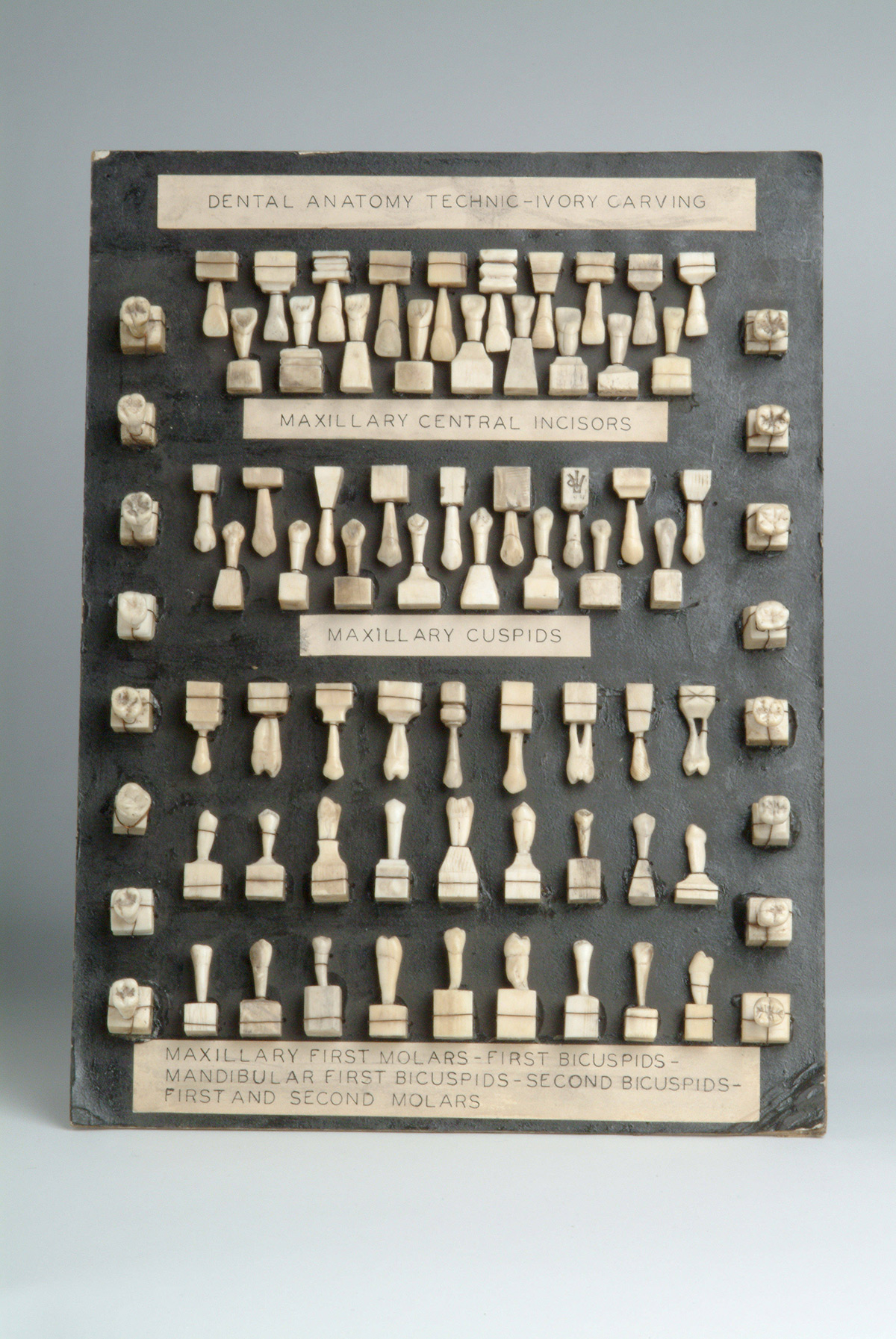

Sponsored by: MUSC James B. Edwards College of Dental Medicine
The work on this page represents the effort of students in the areas of dental morphology, restoration, and prosthodontics. Morphology is the branch of biology that deals with the study of the forms and structures of an organism or any of its parts. For dental students this means learning the shapes of teeth and their relationships to each other and the mouth. In this class students also learn how replicate dental anatomy in wax or other materials in order to advance to classes in restorative dentistry or prosthodontics.
Most of the examples displayed here were created by South Carolinians while at dental schools in other states, since before 1967 South Carolina did not have a dental school of its own.
A sample card containing 78 hand-carved ivory blocks in the shape of different teeth.
These samples were made by senior dental students at Loyola University School of Dentistry in the first part of the 1900s.
The collection was assembled by Dr. Frank M. Amaturo, who was a graduate of the Loyola University School of Dentistry, where he later served on the faculty from 1948 until the school closed in 1993.
Examples of student technique work in dental morphology class.
On display are six plastic yellow carved teeth and one plastic block carved with the initials DRN.
Greene Vardiman Black was one of the most influential dental educators and practitioners in the late 19th and early 20th centuries. His research in the areas of preparation of cavities and improvements in amalgams heralded a new age of American dentistry. Perhaps his most enduring legacy is his classification system for cavities which is still used today.
Dr. Black’s book, A Work on Operative Dentistry (1908) is a classic in the field and has been reproduced in numerous editions.

Tooth models by Dr. Frank Anaturo, c. 1920-1939, Northwestern University, Evanston, Illinois.